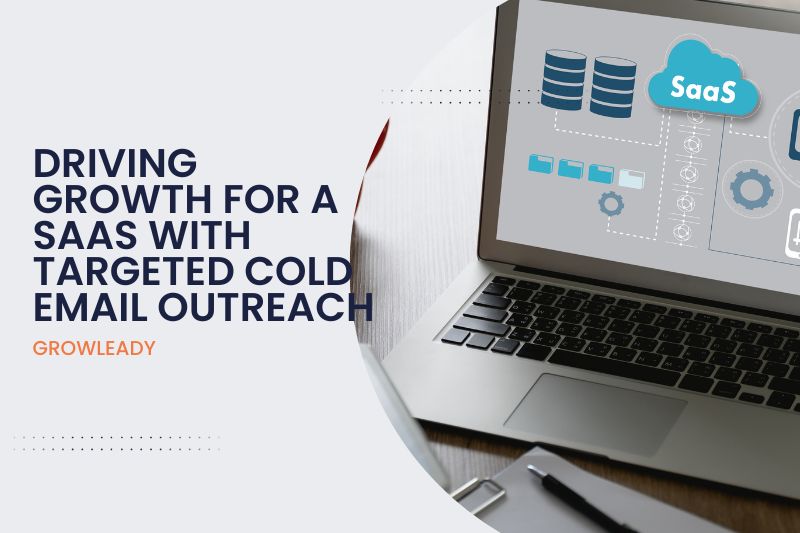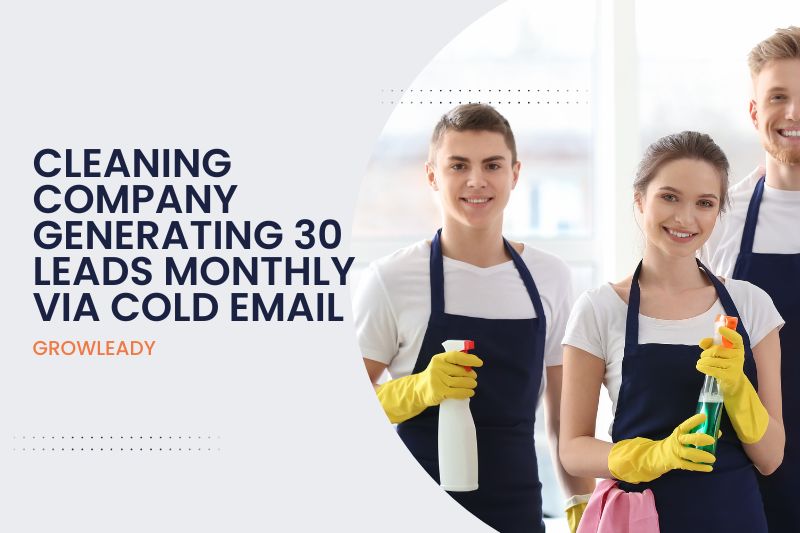Case Study
Recruiting Agency Generates 30 Leads Monthly With Linkedin
Growleady helped a 50-person recruitment agency generate 30 new client leads.
Mar 28, 2023

For recruitment agencies, securing a steady flow of high-quality leads is essential for sustained growth. However, traditional marketing strategies—such as cold calls, email outreach, and paid advertising—often fail to deliver consistent, cost-effective results. Many firms struggle to connect with decision-makers in a meaningful way, making it difficult to convert potential clients into long-term partnerships.
This case study explores how Growleady helped a 50-person recruitment agency optimize its LinkedIn outreach strategy, enabling them to generate over 30 leads per month. By leveraging LinkedIn Sales Navigator, personalized messaging, and strategic follow-ups, we built a scalable system that continues to drive high-value client opportunities.
Our Strategic Approach: Data-Driven LinkedIn Outreach
To maximize the effectiveness of our LinkedIn outreach campaign, we developed a structured, multi-phase approach that focused on precise audience targeting, personalization, and relationship-building.
Step 1: Defining the Ideal Customer Profile (ICP)
A successful LinkedIn outreach strategy starts with targeting the right prospects. We worked closely with our client to define their Ideal Customer Profile (ICP)—the types of businesses and decision-makers most likely to need recruitment services.
Key Targeting Criteria:
Industry Focus: Targeted businesses in sectors with high hiring demands, such as tech, finance, and healthcare.
Job Title Selection: Connected directly with HR managers, talent acquisition specialists, and hiring executives.
Company Size Segmentation: Prioritized mid-sized and growing businesses that required recruitment support.
Geographic Targeting: Focused on regions where the client had a strong track record and industry expertise.
By narrowing the audience, we ensured that our outreach efforts were directed at high-intent prospects, improving response rates and conversion potential.
Step 2: Crafting High-Converting, Personalized Outreach Messages
To stand out in a crowded LinkedIn inbox, generic sales pitches don’t work. Instead, we developed highly personalized outreach messages designed to spark genuine conversations and establish trust.
Our Messaging Strategy Focused On:
Personalized Openers: Referencing the prospect’s company, role, or recent achievements to grab attention.
Value-Driven Approach: Clearly articulating how our client’s recruitment services could solve specific hiring challenges.
Non-Salesy, Conversational Tone: Positioning our client as a helpful industry partner rather than a pushy salesperson.
Follow-Up Sequences: Implementing a structured follow-up system to nurture leads who didn’t respond immediately.
Example of an Initial Outreach Message:
"Hi [First Name], I came across [Company Name] and saw your recent hiring growth—exciting times! I specialize in helping companies like yours streamline their recruitment process, saving time and resources. Would love to connect and explore whether we can support your hiring goals. Let me know your thoughts!"
This friendly yet professional approach resulted in higher response rates, as prospects felt engaged rather than being "sold to."
Step 3: Leveraging LinkedIn Sales Navigator for Targeted Prospecting
To ensure our client connected with the most relevant decision-makers, we utilized LinkedIn Sales Navigator—a powerful tool that enables advanced search filtering and prospect segmentation.
How We Used LinkedIn Sales Navigator:
Advanced Search Filters: Identified decision-makers based on industry, job title, and company growth stage.
Engagement Monitoring: Tracked prospects’ activity (e.g., recent posts, job changes) to personalize outreach timing.
List Building & Segmentation: Created multiple prospect lists to tailor messaging for different audience segments.
By combining Sales Navigator’s data-driven targeting with personalized messaging, we significantly improved our connection request acceptance rates and engagement levels.
Step 4: Implementing a Follow-Up System for Higher Conversions
One of the biggest mistakes in LinkedIn outreach is not following up consistently. Many decision-makers are busy and may miss the initial message—but that doesn’t mean they’re uninterested.
We created a multi-touch follow-up sequence to stay top-of-mind without being intrusive.
Follow-Up Strategy:
Follow-Up 1: A friendly reminder, referencing the initial message and offering additional value.
Follow-Up 2: A brief, insightful industry-related update to maintain engagement.
Follow-Up 3: A final check-in, reinforcing how our client’s recruitment services can benefit their company.
This structured approach resulted in higher response rates, as prospects appreciated the persistence without excessive pressure.
The Results: 90+ Leads in 3 Months & Increased Revenue
By executing this highly targeted LinkedIn outreach strategy, we generated a consistent flow of high-quality leads for our client.
Key Achievements:
30+ new leads per month, totaling 90+ leads within three months.
Higher conversion rates, leading to multiple new client deals.
Significant increase in revenue, as new clients secured long-term recruitment partnerships.
Improved brand positioning, with prospects perceiving the agency as an industry leader rather than just another recruiter.
The client was thrilled with the campaign’s success, as it provided a scalable and repeatable system for ongoing lead generation.
Conclusion
For recruitment firms looking to generate a steady stream of high-quality leads, LinkedIn outreach is one of the most powerful and cost-effective strategies available. Unlike traditional marketing methods, LinkedIn allows recruiters to directly connect with decision-makers, establish trust, and position themselves as go-to industry experts.

